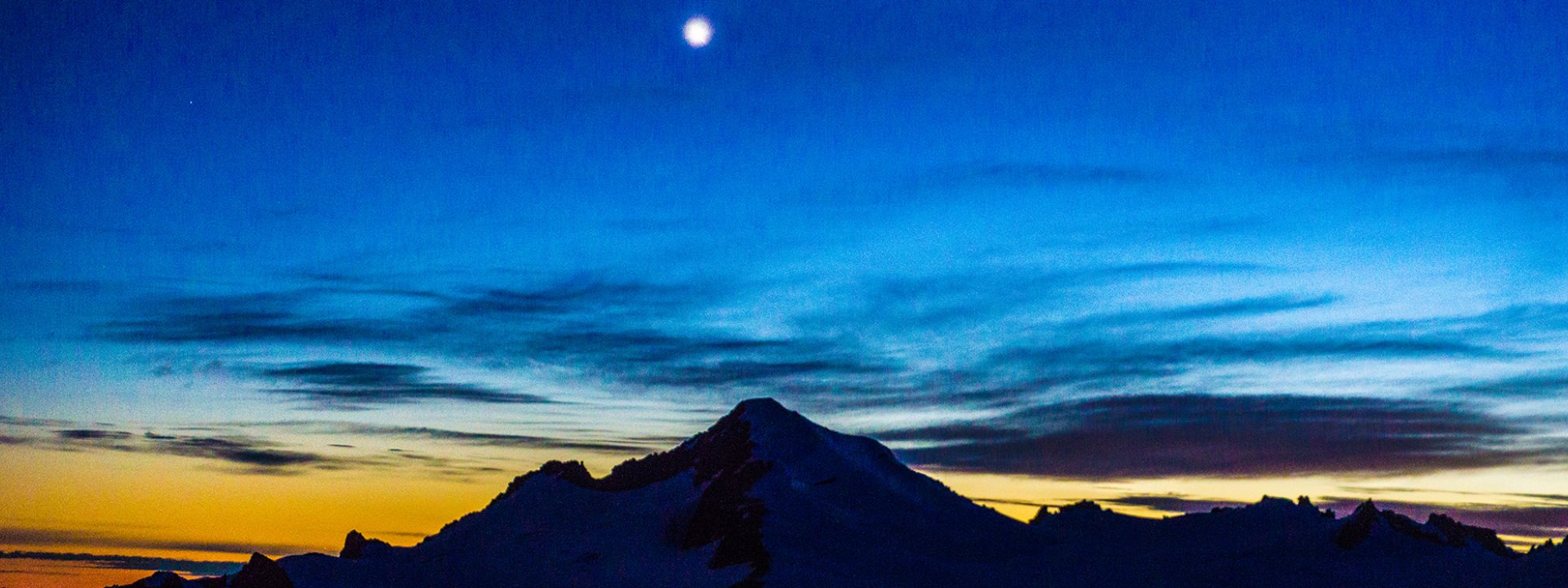Current Conditions
I think it is fair to say that the February storm is one of the longest, most productive storms I've seen in a long, long time. I tallied up the snow totals at the yurt, which are taken twice a day, from when the storm started on February 9th until February 23rd, and the total snowfall during that time frame was 352 centimeters. That is over eleven feet of snow in two weeks (for those of you who prefer their snow measurements in good old 'merican). Not bad.
Needless to say there has been some good powder skiing to be had this month. We now have plenty of snow to be skiing the lower elevation tree skiing, which is perfect for this type of storm. Total snow depths at the lower elevations are topping two meters. We haven't been able to spend much time up high so our observations have been limited but with the good low elevation skiing there hasn't been much need to venture further.
The break in the storm brought some sun on February 25th and 26th. The strong, late-February sun quickly cooked the south and west facing slopes up to at least 7,500' and possibly higher. Cold snow can still be found on shaded terrain, even at lower elevations.
Avalanche Conditions
There is a price to pay for all of that good snow. Prior to this snowfall we had a long dry spell with very cold temps. This created a layer of near surface facets (aka recycled powder) which was sitting on a crust that also started to facet in the cold temps. We have seen some large avalanches run on this layer and with the persistent nature of this type of instability we will be watching this layer for quite some time. It has now been buried by quite a bit of snow and currently sits between 150 to 200 cms deep in the terrain around Washington and Hart's Pass. While the likelihood of a single skier triggering this layer has diminished, the resulting avalanche would be very large and destructive.
Overall, the storm layers have appeared to settled out with this brief break in the storm. The shear volume of snow has helped crush most, if not all, of the storm instabilities. Now we are watching for wind slabs and wet slabs in the upper snowpack. As stated above the late February sun is really packing a punch and we are avoiding being on or under large slopes facing the sun on clear days. The strong sun could create a small surface avalanche that could then trigger the deeper persistent layer or give the upper snowpack enough creep to pull that layer out. Caution is advised when the sun pokes out.
We have continued to keep our terrain reined in while the snowpack has a chance to settle. We would recommend you do the same until we have time to see how those deeper, persistent layers are reacting to all of this new weight.
This page is for informational purposes only and is no substitute for gathering your own observations in the field and checking the avalanche report at www.nwac.us.
Skiing Forecast
The skiing should continue to be good for quite a while. For the next few days we'd recommend heading to shaded terrain on North or East facing slopes. It looks like the next storm could hit us Saturday, with Stevens Pass probably picking up a little more snow than Washington Pass. There doesn't seem to be much confidence in the forecast so take this prediction with some skepticism, but be prepared to get lucky. Even if we don't get much snow the freezing levels are dropping, so the powder on the shaded aspects should stay good.
Have fun and play safe out there.






